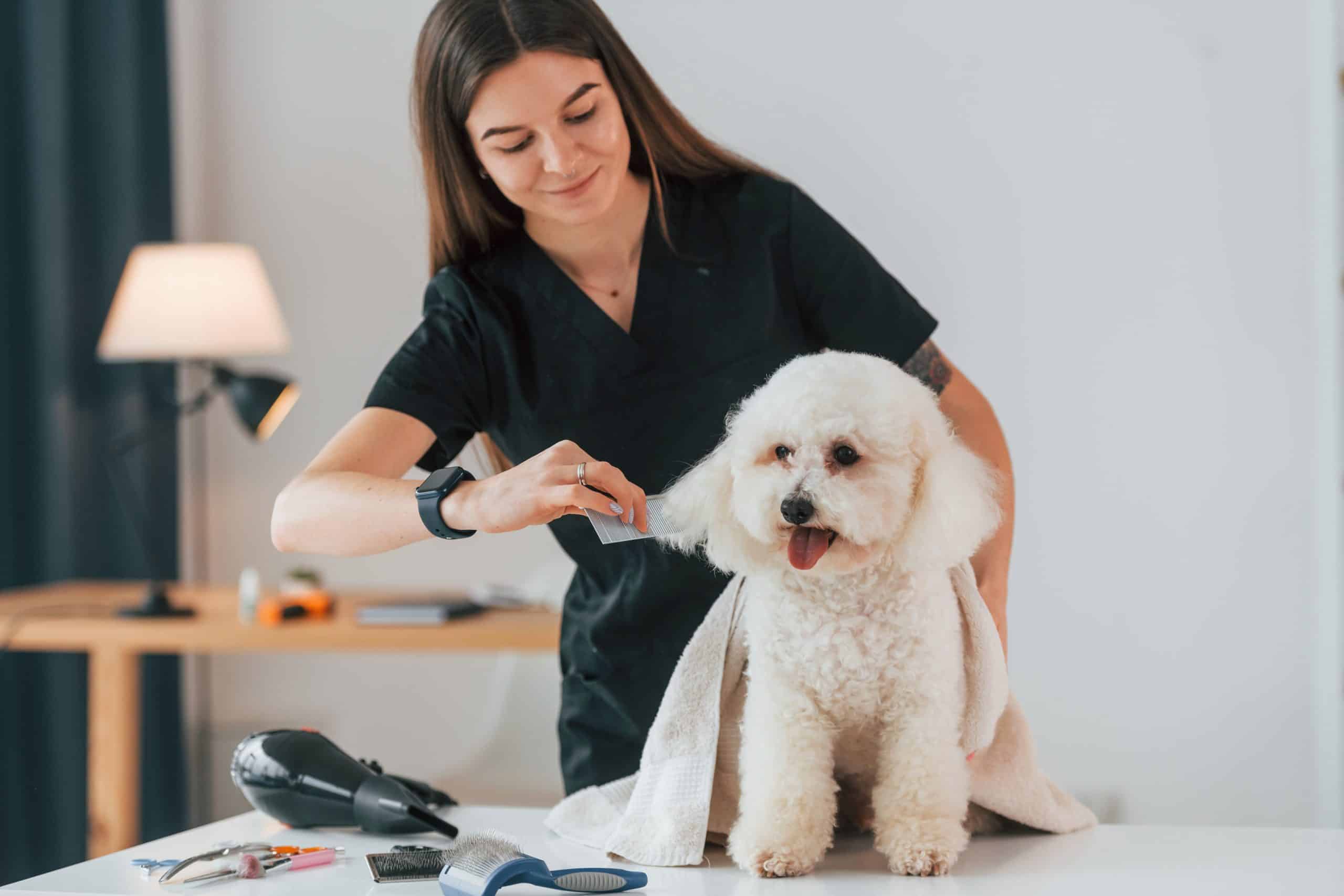Grooming your pet does not only keep your dog looking clean and stylish. It plays a crucial role in maintaining their overall health. Regular grooming can help prevent issues such as excessive shedding, skin and paw disorders, and painful mats, among other things. This task is particularly important for a dog breed with fast-growing nails. So, how do you develop a consistent grooming schedule for them? This article will guide you through the steps.
Understanding the Importance of Regular Nail Trimming
Trimming your dog’s nails is an integral part of the grooming process. Dogs with longer nails can experience discomfort and even pain while walking. Long nails might also cause structural changes to your pet’s foot and leg structure. Nail grooming is not only a matter of aesthetics; it is indeed a health concern.
A lire aussi : What’s the Ideal Diet for a Dog with EPI (Exocrine Pancreatic Insufficiency)?
However, not all dogs need the same frequency of nail grooming. Some breeds have nails that grow faster than others, and hence, require more frequent trimming. Keeping your dog’s nails trimmed will prevent any possible discomfort or health problems.
Knowing How Often to Trim Your Dog’s Nails
The first step to developing a consistent grooming schedule is understanding how often your dog’s nails need trimming. This largely depends on the breed, age, and lifestyle of your dog.
Avez-vous vu cela : How to Choose the Perfect Sized Tank for a Beginner’s Planted Freshwater Aquarium?
Generally speaking, a dog’s nails should be trimmed when they almost touch the ground when the dog is standing. If you hear their nails clicking on the floor, it’s probably time for a trim.
For dog breeds with fast-growing nails, you may need to trim their nails as often as every week or two. Active dogs who walk on hard surfaces will naturally wear down their nails, thus requiring less frequent grooming.
Choosing the Right Tools for Nail Grooming
Having the right tools is essential to ensure a smooth and safe nail grooming process. Dog nail clippers come in two main types: guillotine-style and grinder-style.
The guillotine-style is easy to use; you insert the nail into a hole and squeeze the handle, which moves the blade and trims the nail. On the other hand, the grinder-style tool allows you to grind down the nail gradually, which is excellent for dogs that are scared of the clipping sensation.
Remember, always keep a styptic powder or pen on hand when trimming your dog’s nails. This will help stop bleeding in case you accidentally cut into the quick, the sensitive part of the dog’s nail that contains blood vessels.
Incorporating Nail Trimming into a Full Grooming Routine
Trimming your dog’s nails should be part of a broader grooming routine that includes coat brushing, bathing, and ear cleaning. This holistic approach will help maintain your pet’s overall health and well-being.
Brushing your dog’s coat regularly will help distribute natural oils, promoting a healthy and shiny coat. It can also prevent matting and remove loose hair. Depending on your dog’s coat type, you will need to brush them anywhere between several times a week to every few weeks.
Dogs also need regular baths to keep their skin and coat clean. However, the frequency of baths will depend on the dog’s breed, coat type, and lifestyle. Most dogs will need a bath once a month, but dogs with oily coats may require weekly baths, while those with certain types of fur might only need a bath a few times a year.
Lastly, ensure to check and clean your dog’s ears regularly. Dogs with floppy ears are prone to ear infections and should have their ears checked and cleaned every week.
Making Grooming a Positive Experience for Your Dog
Lastly, the key to consistent grooming is to make it a positive experience for your dog. Start by gradually introducing your dog to grooming procedures. Reward them with treats and praise to associate grooming with positive feelings.
Remember to be gentle and patient during grooming sessions, particularly during nail trimming. It’s also a good idea to groom your dog when they’re calm and relaxed, like after exercise or a meal.
In summary, developing a consistent grooming schedule for a dog breed with fast-growing nails involves understanding the importance of regular nail trimming, knowing how often to trim your dog’s nails, choosing the right tools for nail grooming, incorporating nail trimming into a full grooming routine, and making grooming a positive experience for your dog. By following these steps, you can ensure your dog’s nails are always in the best condition, promoting their overall health and happiness.
Creating a Grooming Schedule and Sticking to It
After identifying how often your dog’s nails need trimming and acquiring the appropriate tools, the next step is to create a grooming schedule. This schedule should not only include nail trimming but also other grooming activities like coat brushing, bathing, and ear cleaning.
As mentioned earlier, fast-growing nails might need trimming every week or every other week. Coated breeds often require more regular brushing to prevent matting and excessive shedding. Bathing frequency will depend on your dog’s coat type and lifestyle. For instance, dogs with oily coats might need bathing every week, while dogs with certain fur types might only need a bath a few times a year.
Make sure to also schedule regular ear checks, especially for dogs with floppy ears which are prone to infections.
It’s crucial to stick to the schedule you create. Consistency is key in dog grooming, as it ensures your dog’s nails, coat, teeth, and ears are always in good condition. Moreover, a regular grooming schedule helps your pet adapt to the grooming routine, making the process easier and less stressful for both of you.
Engaging a professional groomer can be beneficial, especially for complex grooming tasks or if you are not comfortable doing them yourself. They have the experience and knowledge to handle different dog breeds and their specific grooming needs. Plus, they can provide valuable tips and advice to improve your grooming routine at home.
Conclusion: The Importance of a Consistent Dog Grooming Schedule
In conclusion, a consistent grooming schedule is crucial for maintaining your dog’s overall health, particularly for breeds with fast-growing nails. Regular nail trimming is essential to prevent discomfort, structural changes to the foot and leg, and other potential health issues.
The process of developing this schedule involves understanding the frequency of trimming your dog’s nails, selecting the right grooming tools, incorporating nail trimming into a full grooming routine, and ensuring a positive grooming experience for your dog.
Remember that consistency is key. Whether you’re brushing your dog’s teeth, trimming their nails, or giving them a bath, it’s important to stick to the schedule and make grooming a positive experience through positive reinforcement. This way, your dog will associate grooming with enjoyable moments, making it easier for you to maintain their health and well-being.
With patience, regularity, and the right approach, you can effectively manage the grooming needs of your dog, regardless of how fast their nails grow. Your dog will not only look clean and well-groomed but also be happier and healthier, making your bond with them even stronger.
By following these steps and tips, even double coated breeds or breeds with fast-growing nails can maintain pristine condition. After all, every aspect of your dog – from their dog hair to their dog teeth to their dog ears – deserves careful attention and care. Regular nail trims and a consistent dog coat maintenance schedule will ensure your pet remains the best in show, even if they only parade around your living room.





